How to Start Your Online Store in 6 Simple Steps

Updated by March 18,2024
You must know how convenient it is to be browsing for your want-to-buy product online and simply clicking "Add to Cart" or "Buy It Now" and then simply wait for the parcel to show up. So do most people, and that’s the biggest benefit of shopping online.
Fewer people go to physical locations for purchasing products because of the pandemic and more and more shoppers choose to purchase in online stores instead nowadays.
This means that there's a more promising future in building an online store compared to opening a brick-and-mortar store if you want to start your eCommerce store.
Follow the 6 steps below to set up and run your online store:
But before learning how to run an eCommerce store, here are a few benefits of running an online store for you, that will hopefully solidify your confidence and give you the courage of starting something new.
24/7 shopping: Most eCommerce websites allow shoppers to peruse products and make buying decisions at any time, day or night. This makes shopping easier for customers, and that kind of accessibility is a huge competitive advantage.
As a business owner, this also allows you to bring in sales while you’re off doing something else (even while you’re sleeping).
Flexibility: Having an online store gives you more channels to engage with customers. It’s easy to integrate with social media and let people shop from their feed.
Customers might find you in Google searches and make purchases as soon as they are ready. Online store can also easily practice Email marketing automatically with some basic knowledge.
Widened scope: A physical store is limited to selling to customers who are in the area. Many eCommerce websites extend their business to people all over the country or around the world, vastly expanding their customer base and potential revenue.
Selling online also offers the ability to broaden and increase inventory, as the owners don’t even have to rent a physical warehouse and manage inventory if they adopt the dropshipping distribution model — the number of items a business can sell online doesn’t need to be limited in the same way as a physical store, which might be a consideration to increase cash flow.
Purchase-funnel clarity: Currently, it’s nearly impossible to track how often a single customer comes to a physical store to browse before making a purchasing decision.
However, an online store can track every clicks a customer makes, providing valuable insights into the purchasing process and paving the way for marketing opportunities (such as abandoned cart emails) to nudge customers who may be on the fence about purchasing.
Tools: There are more and more tools that could help you with your online business with the development of technology and the Internet.
With them, you can start your eCommerce store successfully and easily. And they will help you to save time, save money, as well as reduce the risks.
Step 1: Do Market Research
By helping to provide the important and necessary information and analysis to the business, market research can greatly help your online store.
It offers you a comprehensive understanding of the market situation like the market scale, sales volume, and sales prospect, so you will understand your customers and competitors better than if you did doing nothing and decided to start an online store on an impulse, which can lead to inevitable losses.
Doing research helps you get the information about who is buying a certain type of product or service you want to offer, who is not, what motivates them, and whether they are loyal enough to a certain brand.
Before choosing products to sell, you should know well about the market you enter into and have a solid preparation to face difficulties and risks.
Step 2: Pick Products to Sell
Before opening a shop, you need to know what kind of products you need to find. As a novice, you should sell products within your existing ability, so that you can quickly make money!
Here are some recommended product categories that have obvious characteristics respectively and might help you decide what you want to offer in your store.
Products in the seasonal category - clear dividing line between high and low seasons
Products that everyone needs – highly renewable commodities or must-have
Products that more profitable - high tickets product or providing big margins
Remember: don’t just dive into some products category considering only your pure interest. It might seem easier to sell a commodity you have a basic understanding of, but it's actually a small trap.
When you choose to sell unpopular items, no matter how much time and energy you would put in, it won’t easy to boost sales, even if you like them. The most important is to find what people want to buy, not what you would like to sell.
Once you become an experienced online seller, you can add products that are not so popular but do have a slowly growing selling rate to your store to hold a steady growth.
Use tools to make some advanced research about what type of products to choose. Google Trends is a neat little tool that can bring you great insights. Type a product name or category in the search box and you’ll get the information about its search history over a period of time and discover if it is, or has, the potential to be trending.
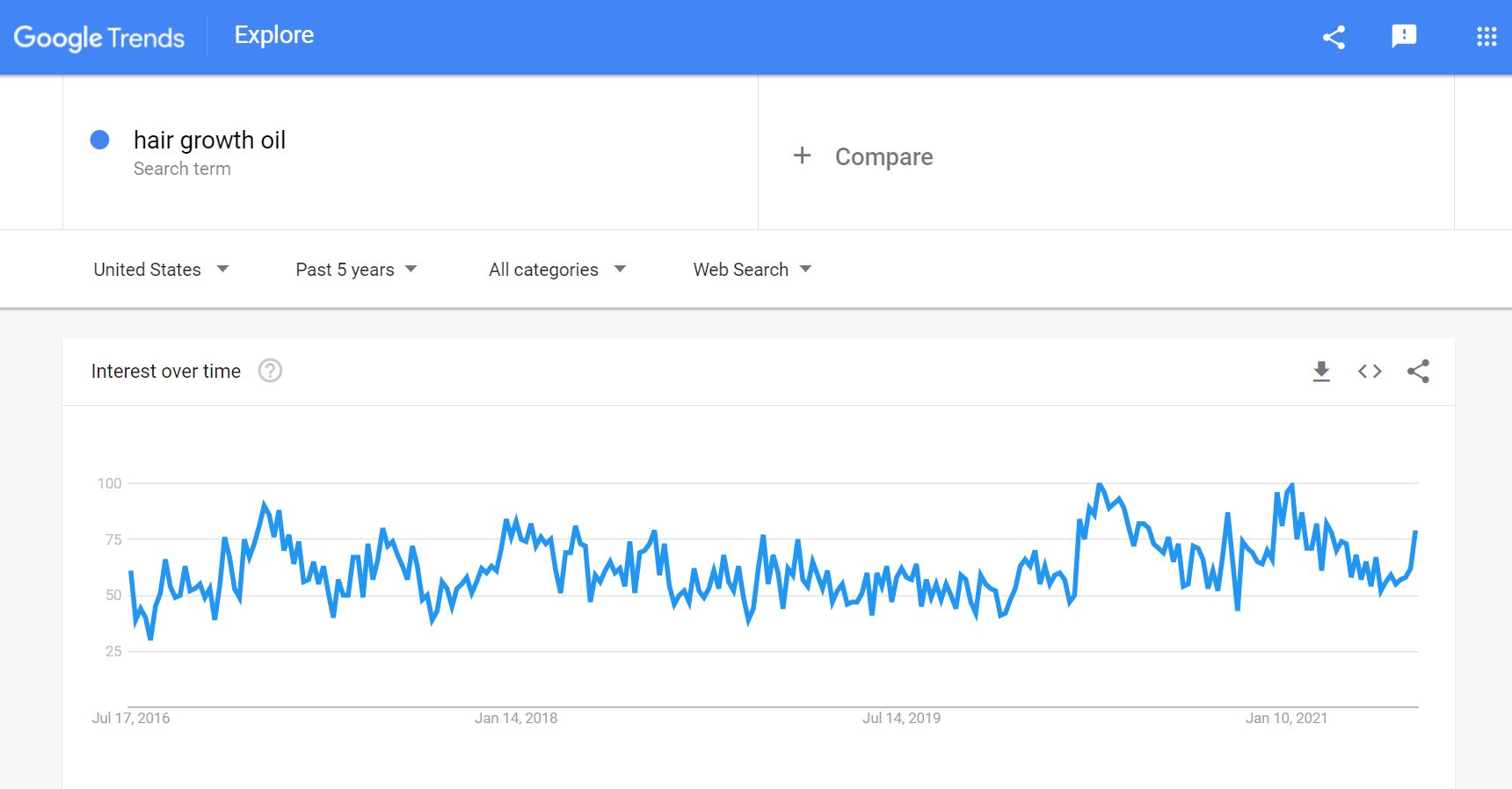
From the search result, it’s demonstrated that hair growth oil has been a steadily searched term in the US which indicates that it may be a good choice to keep it on your online store. But it’s just a reference, this is not definite evidence that can ensure growing sales volume and profits.
Step 3: Choose Your Distribution Model
If you decided what to sell, it’s time for you to choose your distribution model. For beginners, the most beneficial and easiest way to start is dropshipping. Dropshipping is an order fulfillment method, which does not require the seller to keep product inventory.
Instead, the store sells a product and passes the order to a third-party supplier, who then ships out the order to the customer directly. The advantages are obvious: No physical warehouse is needed.
The retailers don't need to put money in renting storage for inventory. So retailers are not involved in the shipping or delivery process.
In the dropshipping model, suppliers ship products directly to customers, which eliminates the trouble for retailers to transport products altogether.
As the products may come from different suppliers and may be shipped separately, the shipping fee might be slightly higher regardless of the supplier's cost.
In a nutshell, dropshipping is more convenient for those who just start or want to start their online business if they have a micro-budget plan.
Step 4: Build Your Online Store
As a business owner, your responsibility is to manage your products stock, display your products, do promotions for your commodities, engage your customers, get paid, ship the products, and care about your everyday finances and operations.
So you will need to use some tools to manage each of these activities, and it will take you time and money to group those disparate systems and data together.
The eCommerce platform you choose to build your store on will play an important role in the success of your business.
There are multiple eCommerce platforms for you to use which don’t require any coding knowledge at all. Some charge monthly, some are free, and some charge a percentage of each transaction.
Shopify
It’s helpful to first understand that Shopify is not just a product—it’s not just a store builder or a tool to sell your products. Shopify is an eCommerce platform that offers a mode to quickly launch your dream online business and start selling your commodities to your customers all over the world.
It helps to organize the layout of the store’s appearance through themes (you can modify or change it any way you like).
It also provides payment processing solutions, allowing you to accept and receive payments for products you sell with more than 6,000 integrations and apps in its App Store to help you add additional features and functionality to your online store. There are no setup fees on any of Shopify’s plans.
(1) Beginner-friendly
(2) 24/7 support
(3) In-house App Store
(1) Limited customization to product and content pages
WooCommerce
It is a flexible, open-source eCommerce solution built on WordPress. WooCommerce and WordPress are both free, open-source software. WooCommerce is a plugin, so you’ll need a WordPress site that can use plugins.
The very first thing you’ll need to do is choose a host for your store and select a plan. So for those who choose WooCommerce, setup costs are included for hosting and domain fees.
(1) Sales Reporting
(2) Processing eCommerce Orders
(3) Integration with WordPress
(4) Personalized coupons
(1) Coding skills needed
(2) Charge a little high for beginners
Wix
It is a cloud-based development platform with millions of users worldwide which makes it easy for online retailers to create a beautiful, professional eCommerce store presence.
(1) Excellent templates
(2) Flexible enough
(1) Can't add tables easily
(2) High Pricing for beginners
There is the pricing information of each platform mentioned above.
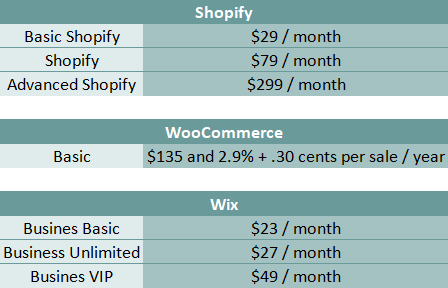
Step 5: Decide Supply Platform
Once the distribution model is chosen and store is open, the next action is to pick out and set aside a supply platform for perfecting the whole process of online selling.
One of the most picked platforms for those who have limited experience in choosing a supply website is AliExpress. AliExpress is a subsidiary of Alibaba group.
Launched in 2010, it has become one of the fastest-growing eCommerce platforms outside China. AliExpress caters more to international markets, offering English and 15 other languages.
Read more to know about the comparison between Wish vs. AliExpress:

For the business novice, AliExpress provides a fast and affordable way to start selling products online. You can choose from a large number of potential items for your customers.
You don't have to pay anything until your customers start to order which means that if your business plan is not as smooth as you want it to be, the risk is still under control.
With your store now built, your distribution model and supplier platform decided, your business is almost set up.
While managing your orders and products manually can be achieved at first, imagine receiving 100s orders waiting for manual fulfillment, will it be time-consuming to operate these orders one by one? It’s almost impossible to do so and may lead to unavoidable mistakes.
| Get Started Now to Grow Your Online Business with the Best AliExpress Dropshipping Tool - DSers! |
This is why using some third party tools or apps is important and you should use them from the get go, to get accustomed to them. Try the apps mentioned above in the Shopify’s app store.
If you use AliExpress for your supplier platform, you should consider using its official partner: DSers, an app in the Shopify app store that can place 100s of orders to AliExpress in seconds. It is not only available in Shopify, but DSers also supports Wix and Woocommerce.
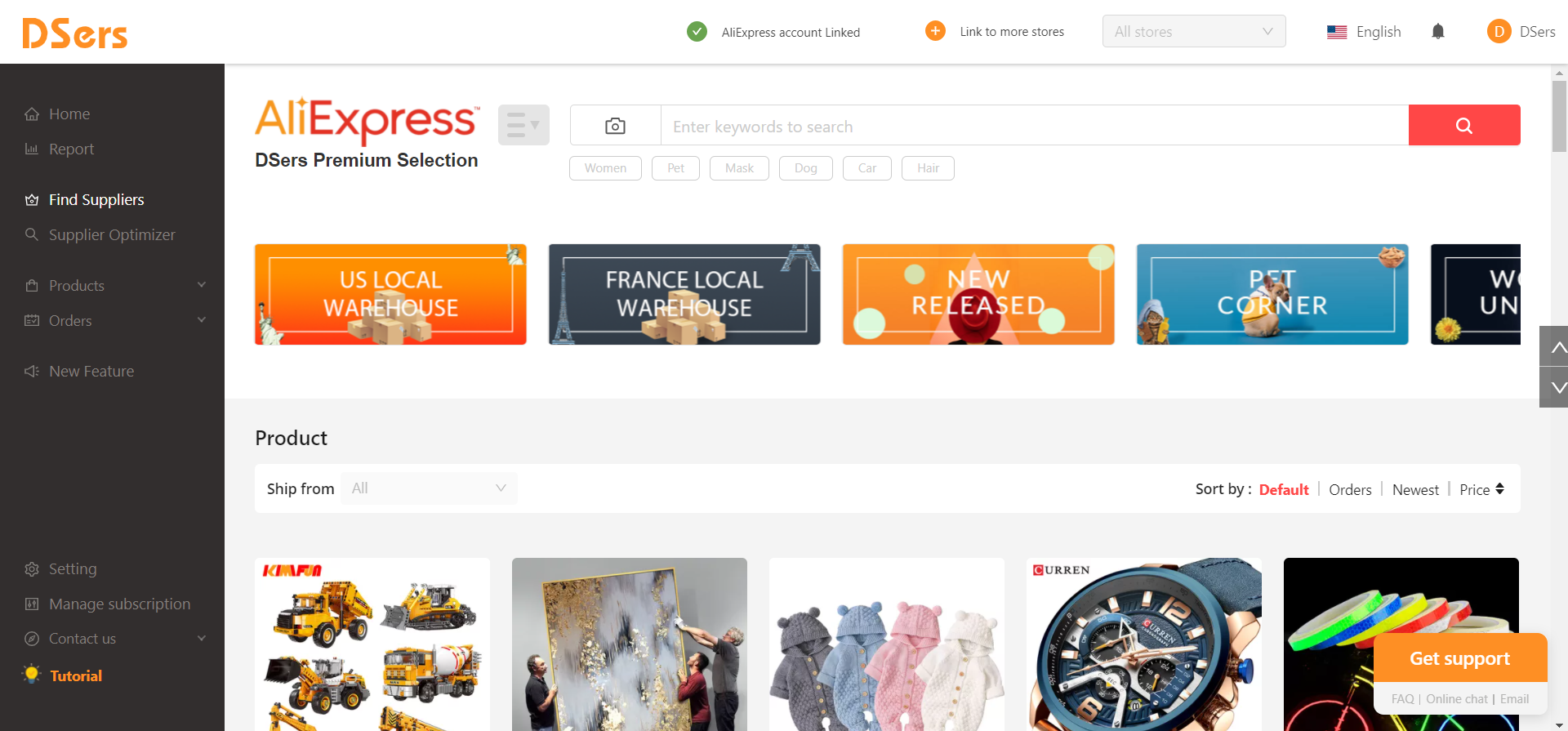
Step 6: Promote Your Store
Now that everything is set up you could start your online business. But before you do, an important last step as to be considered: Bringing traffic to your newly opened store.
Good promotions play a vital role in the process of launching a store or new products. Nowadays, Internet has become a part of our lives.
People are always interested in eye-catching and interesting novelties, so if your promotions are successful, it means you are already half way to owning a successful business.
As you started first by doing market research in these steps, it won't be that hard if you know well your potential customers.
You can choose to promote your store to your target through ads, blogs, links on the website, by cooperating with brands, etc.
Advertising on social media is the most common and the most cost-efficient way to promote your store. It’s important to keep your social media content interesting and attractive enough.
Final Words
Owning an online store is not smooth sailing since there are 7.9 million retailers around the world and 2.1 million retailers in the US alone. Yes, it has tremendous potential, but you also need to be fully prepared for unforeseeable risks.
Online retail can be an exciting adventure for you to try and achieve your financial goal. By adopting the right strategies before your store goes online, you will lay the foundation for success of your online eCommerce store.






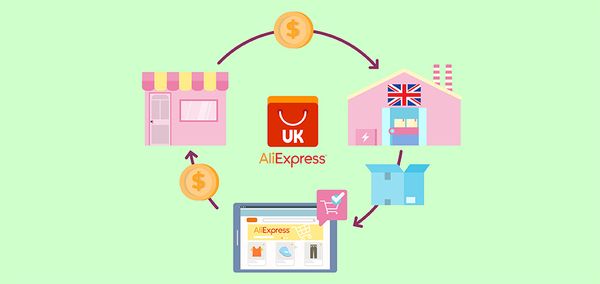

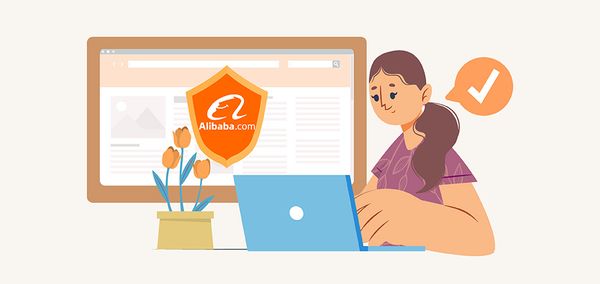





 Company
Company
 Why Choose DSers
Why Choose DSers
 Blog
Blog
 Help Center
Help Center




 Live Chat
Live Chat